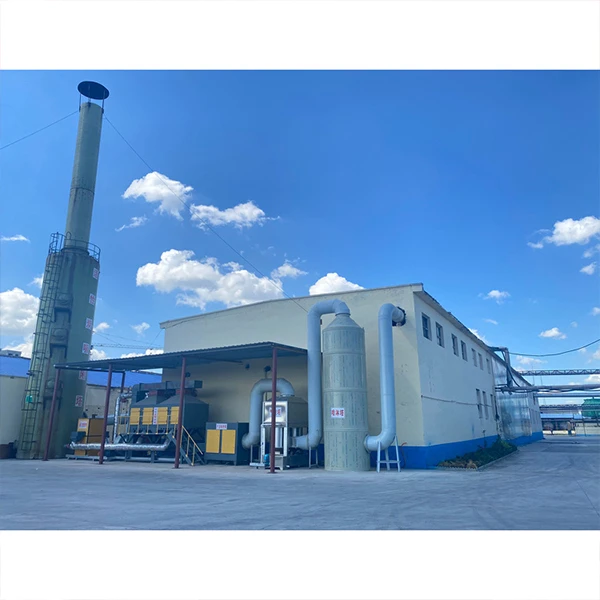The Landscape of Cellulose Manufacturers Innovations and Sustainability
Cellulose, a natural polymer found in the cell walls of plants, is one of the most abundant organic compounds on Earth. It serves as a fundamental building block for many industries, including textiles, paper, food, pharmaceuticals, and biofuels. As demand for sustainable materials grows, cellulose manufacturers are at the forefront of innovation, seeking to balance production efficiency with environmental responsibility.
The Role of Cellulose in Various Industries
In the textile industry, cellulose is primarily derived from cotton and wood pulp. Manufacturers produce rayon, lyocell, and other cellulose-based fibers that offer breathability and comfort. These fibers are not only biodegradable but can also be produced using environmentally friendly processes, such as the closed-loop system used in lyocell production. This method recycles water and solvents, minimizing waste and pollution.
In the paper industry, cellulose’s properties make it an ideal choice for creating high-quality paper products. Many cellulose manufacturers are continually improving processes to produce paper from sustainable wood sources, as well as from agricultural residues like straw and sugarcane bagasse. These initiatives help reduce the reliance on traditional forestry practices, which can lead to deforestation and habitat loss.
The food industry uses cellulose derivatives as thickeners, stabilizers, and emulsifiers. These additives enhance food texture and shelf life, playing an essential role in product development. Notably, cellulose is often used in low-calorie processed foods to provide bulk without added calories, appealing to health-conscious consumers.
In the pharmaceutical sector, cellulose is utilized in drug formulation as an excipient to aid in the delivery of medications. Its properties allow for controlled release and improved stability, making it indispensable in the production of tablets and capsules. Moreover, cellulose is being explored as a potential carrier for targeted drug delivery systems, showcasing the versatility of this compound.
Trends in Cellulose Production
cellulose manufacturers

Sustainability has become a key focus for cellulose manufacturers. With environmental concerns at the forefront, companies are exploring various ways to reduce their carbon footprint. This includes utilizing renewable energy sources, optimizing resource consumption, and investing in waste reduction technologies. Some manufacturers are even turning to biowaste, such as agricultural residues and industrial by-products, as raw materials for cellulose production.
Another significant trend is the advancement in cellulose technology. The development of nanocellulose—a nanometer-scale form of cellulose—has opened new avenues in various applications. Nanocellulose, known for its strength and lightweight properties, is being integrated into composite materials, packaging, and even electronic devices. Its potential to replace synthetic materials in many applications aligns with global efforts towards sustainability and reducing plastic use.
Furthermore, the integration of digital technology in manufacturing processes is on the rise. Smart manufacturing techniques, including automation and data analytics, help improve efficiency and reduce waste. By optimizing production processes, cellulose manufacturers can not only maintain profitability but also enhance their environmental performance.
Challenges and Opportunities
Despite the promising landscape for cellulose manufacturers, several challenges remain. Fluctuating raw material prices, competition from synthetic alternatives, and regulatory pressures can complicate production efforts. Additionally, ensuring a steady supply of sustainably sourced materials is crucial, particularly as more companies commit to environmental sustainability.
To overcome these challenges, collaboration across the supply chain is essential. Engaging with suppliers, researchers, and customers allows manufacturers to share knowledge, develop best practices, and innovate more effectively. The establishment of partnerships can lead to new product development and market expansion, ultimately benefiting all stakeholders involved.
Conclusion
The role of cellulose manufacturers is becoming increasingly prominent in a world that values sustainability and innovation. By adopting environmentally friendly practices and leveraging new technologies, these companies can meet the rising demand for cellulose-based products across various industries. As they navigate challenges and seize opportunities, cellulose manufacturers are well-positioned to contribute significantly to a more sustainable future. The journey towards a greener economy is complex, but the commitment of cellulose manufacturers to innovation and sustainability is paving the way for transformative changes in materials science.
-
A Comprehensive Guide to Methyl Ethyl Hydroxyethyl Cellulose: Applications and Industry InsightsNewsNov.24,2025
-
Understanding Methyl 2 Hydroxyethyl Cellulose: Uses, Benefits & Industry InsightsNewsNov.24,2025
-
Hydroxyethyl Methyl Cellulose HEMC: Industrial Uses, Benefits & Future TrendsNewsNov.23,2025
-
HEMC Cellulose: Versatile & Sustainable Industrial Polymer | YoungcelNewsNov.23,2025
-
Methyl Hydroxyethyl Cellulose: Versatile Building Block for Industry & SustainabilityNewsNov.23,2025
-
CAS 9032 42 2: Understanding Polyvinyl Alcohol's Impact on Industry & SustainabilityNewsNov.22,2025




